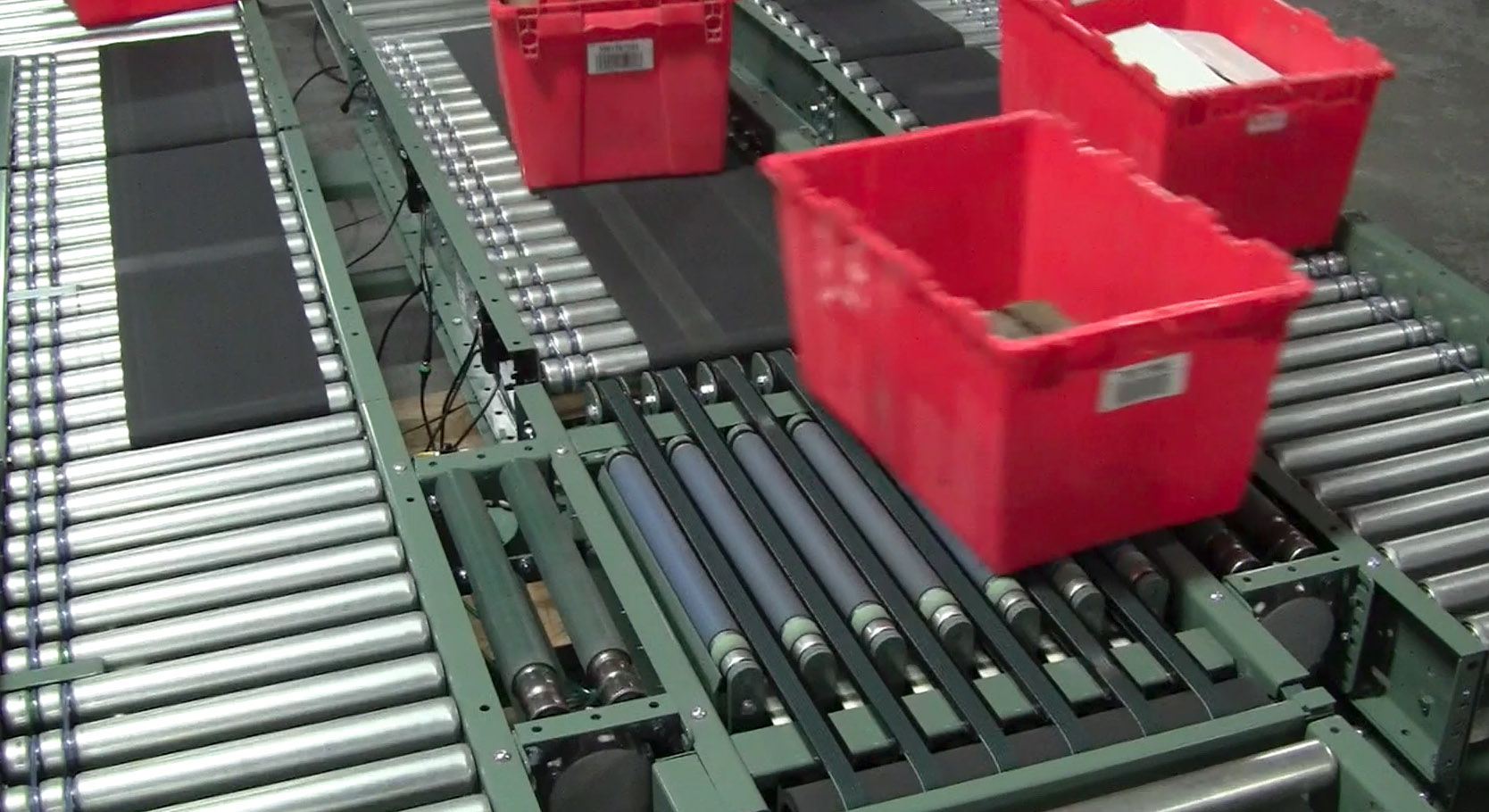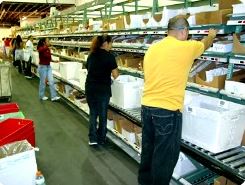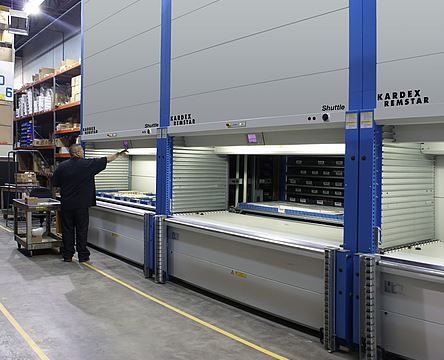Order picking is an essential part of warehouse operations. When implemented properly, advanced order picking strategies can lead to improvements in picking accuracy, higher pick rates, higher throughput, improved ergonomics and better space utilization. There are several picking methodologies that can ensure that your warehouse runs as efficiently and smoothly as possible.
Which picking strategy you use depends on your order profile and what you are trying to achieve. Each method has unique benefits and provides significant improvements over standard manual picking.
- Pick and Pass: this involves picking everything in a specific area of the warehouse and then passing the order
 on to the next person to pick from their section and so on until the order is complete. That is the pick and pass part. This method uses picking carts or gravity conveyor. It eliminates excessive travel between each pick and improves ergonomics. Advanced SKU slotting to distribute fast, medium and slow movers throughout the picking zones makes this a highly productive method when used to pick the right order profile and the size of each pick zone can be dynamically varied based on each day’s order profile.
on to the next person to pick from their section and so on until the order is complete. That is the pick and pass part. This method uses picking carts or gravity conveyor. It eliminates excessive travel between each pick and improves ergonomics. Advanced SKU slotting to distribute fast, medium and slow movers throughout the picking zones makes this a highly productive method when used to pick the right order profile and the size of each pick zone can be dynamically varied based on each day’s order profile.
- Zone Divert: this is pick and pass but with automated conveyors using controls and software that brings each order tote into the picking zone based on which zone the order has picks in. Before each zone, the picking tote passes a barcode scanner while traveling on the conveyor belt and is mechanically diverted to the appropriate zone for picking. Once picks are completed the tote is pushed back onto the conveyor and moved to the next appropriate zone.
- Batch Picking: this picking strategy revolves around commonality. Orders are batched together and picks for multiple orders are made at one time and then each SKU distributed into the individual order. If many orders need the same SKU, that location is only visited once by the picker for multiple orders. This significantly reduces the time required to pick those orders.
- Parallel Picking with Consolidation: this is used for large orders and involves multiple people splitting up the order. They each pick for a certain part of the order and then bring everything together in a consolidation zone, where it’s all coalesced under one shipping label and one order.
- Pick to Light: known for improving accuracy and speed, the pick to light method relies on software and simple hardware. Each
 order has a barcode that lists the items in the order. You scan the barcode; a light will light up under the required pick face. You retrieve the item and press the light to turn it off. Once done, you pass the order to the next zone. Pick to light is flexible and scalable, and can be used with any of the other methodologies.
order has a barcode that lists the items in the order. You scan the barcode; a light will light up under the required pick face. You retrieve the item and press the light to turn it off. Once done, you pass the order to the next zone. Pick to light is flexible and scalable, and can be used with any of the other methodologies.
- Goods to Person/ASRS: this technology can also be used in conjunction with the above-mentioned picking methodologies and further improves the ergonomics of the
 order picking function. Automated equipment delivers a tray, shelf or tote to the picker based on the SKU’s required in an order. The picking tote is presented automatically to the picker. If it is a tray, pick to light technology can be employed to accurately and quickly direct the picker to the correct pick face on the tray. This technology has the added benefit of better space utilization than floor level picking shelves. Since the machine is bringing the SKU’s to the picker, they can be 30’, 40’ or 50+’ high. The picker stays on the ground and all picks are at an ergonomically ideal height.
order picking function. Automated equipment delivers a tray, shelf or tote to the picker based on the SKU’s required in an order. The picking tote is presented automatically to the picker. If it is a tray, pick to light technology can be employed to accurately and quickly direct the picker to the correct pick face on the tray. This technology has the added benefit of better space utilization than floor level picking shelves. Since the machine is bringing the SKU’s to the picker, they can be 30’, 40’ or 50+’ high. The picker stays on the ground and all picks are at an ergonomically ideal height.
These advanced order picking strategies all work with other picking equipment to make the process simple. Vertical storage equipment, such as VLMs and vertical and horizontal carousels are also sometimes used in conjunction with these picking systems. The strategies also work with shelving and flow racks.
So why utilize these advanced methods of order picking? These picking methods usually make it easier to achieve the listed benefits below over manual picking. These include:
- Improved Picking Accuracy: with Pick to Light there is no wasting time trying to figure out where something is, and there’s little margin for error, as you’re picking from the lighted pick face.
- Improved Space Utilization: thanks to shuttles, vertical carousels and ASRS technology, vertical space can be fully utilized. These tall storage systems bring the pick to the picker. No climbing ladders or stairs required.
- Improved Working Conditions: because advanced order picking methodologies and technology (automated storage systems, shuttles, horizontal and vertical carousel) bring goods to the picker, they reduce travel distances and optimize ergonomics.
- Higher Throughput: if you want to increase throughput, you must add more workers or automate. Many of these picking strategies will double or triple the throughput rates of manual systems, reducing the need to hire and retain hard to find reliable labor.
If you’re under pressure to keep pace with increasing customer demands, consider implementing an advanced picking strategy to improve overall picking performance and efficiency. Abel Womack would like to learn more about your picking challenges, analyze your operations, and help implement the ideal order picking solutions for your facility.






Leave a Reply
You must be logged in to post a comment.